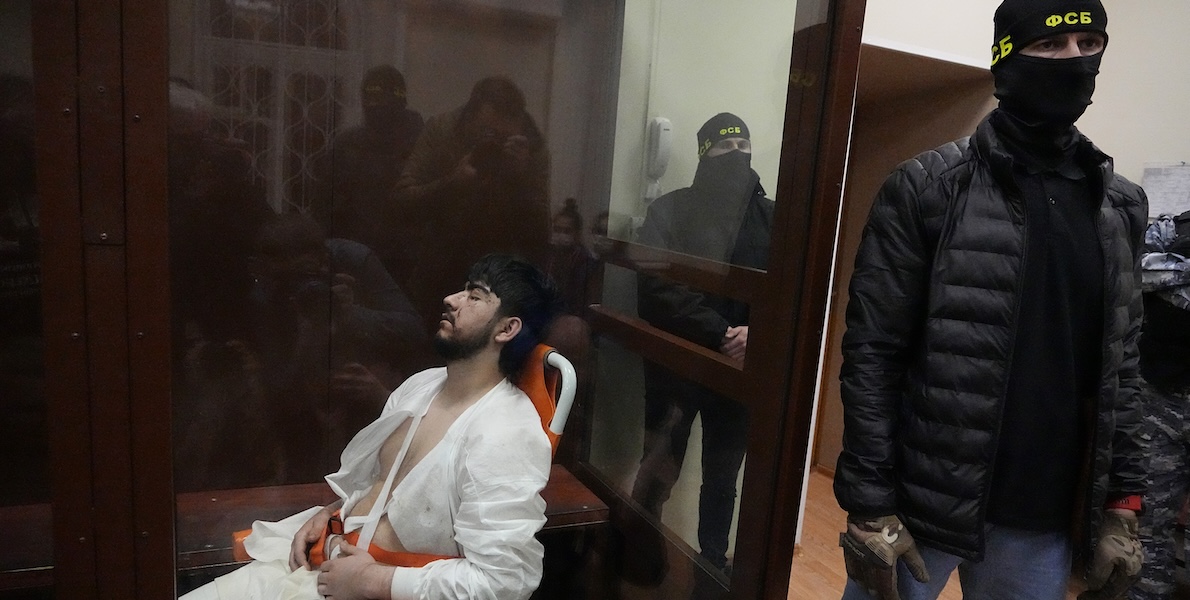Loading player
After Friday’s terrorist attack at Crocus City Hall in Moscow, in which at least 140 people were killed, there have been incidents of violence against migrants and foreign people, particularly from Central Asia, in various parts of Russia. The four men arrested by the Russian authorities and held responsible for the attack, in fact, are all citizens of Tajikistan, a former Soviet republic in Central Asia with a Muslim majority.
The Russian regime is carrying out indiscriminate arrests of Tajiks and on social networks militants and leaders of the Russian right have started calling for stricter rules on immigration from Central Asian countries. On the other hand, it seems that Russian President Vladimir Putin wants to try to limit hate campaigns to prevent tensions from turning into large-scale violence. Immigrants from Central Asia are in fact an important part of the soldiers enlisted and sent to fight in Ukraine, and in the last two years, to encourage recruitment, the authorities had made it easier for Tajiks, Uzbeks and Kyrgyz to enter Russia and stay there to work. There are no official data, but the army’s use of migrants and ethnic minorities, also attracted by above-average pay, is described as growing in recent years.
In Russia there are about one million Tajiks and about 10 million migrants from Central Asian countries, according to figures from the Russian Interior Ministry. The numbers could be even higher, considering unregistered migrants. Tajikistan is one of the poorest countries in the area, it has ten million inhabitants and half of its GDP (Gross Domestic Product) comes from remittances from people who work abroad. In Russia, Tajiks work mainly as taxi drivers, waiters, riders and construction workers. Tajiks are ethnically Iranian and mostly speak a Persian language: within the Russian federation, 70 percent of the population is ethnic Russian, but there are almost 200 ethnic groups.
Police checks in St. Petersburg (EPA/ANATOLY MALTSEV)
After Friday’s attack, claimed by ISIS through its central news agency al Amaq, and the arrest of a dozen mostly Tajik people, the police reaction was concentrated about the Tajik community in Russia. The independent Russian newspaper Mediazone he wrote that there were arrests apparently unmotivated and in some cases those arrested were tortured. In Blagoveshchensk, in eastern Russia, a bar run by Tajik people was set on fire, while in Kaluga, 200 kilometers from Moscow, some Tajik people were attacked and beaten by unknown persons. Episodes of violence, whether verbal or physical, would frequently feature self-proclaimed nationalist and right-wing vigilante groups.
Added to these episodes of violence were more numerous and frequent episodes of discrimination and online hate campaigns. Controls on people of Muslim religion coming from Central Asian republics have been intensified at airports, with preventive detentions in some cases even very long.
– Listen also: What the hell is ISIS doing in Moscow?, with Daniele Raineri
On many of the popular Telegram channels that deal with the war in Ukraine and that support the policies of the Putin regime, calls for more restrictive policies towards migrants, especially those coming from Islamic countries, have become recurrent. In the days following the attack, Russian Prosecutor General Igor Krasnov cited the 75 percent increase in crimes committed by migrants in 2023 and said that it was necessary to find a balance “between the safety of citizens and the economic necessity of resorting to work of foreigners”.
In the past, after the wars in Chechnya in the early 2000s, Russia had implemented more repressive policies towards ethnic and religious minorities, while increasing central control over the other republics of the federation.
In recent days, Putin’s rhetoric has often underlined the multi-ethnicity of the Russian Federation, recalling that of the Russian and then Soviet empire. The needs for manpower and military recruitment push the regime to limit ethnic tensions, despite pressure from its base of supporters. The Russian regime is also attempting to shift responsibility for the attack to Ukraine and the West.
– Read also: ISIS-K’s presence in Central Asia is expanding
